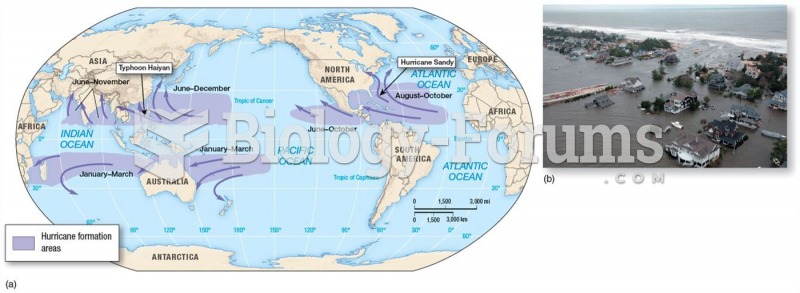Answer to Question 1
ANSWER: Hurricanes can be described as an organized mass of thunderstorms that are an integral part of the storms circulation. Near the surface, moist tropical air flows in toward the hurricanes center. Adjacent to the eye, this air rises and the water vapor condenses into huge cumulonimbus clouds that produce heavy rainfall, as much as 15 cm (6 in.) per hour or more. Near the top of the clouds, the relatively dry air, having lost much of its moisture, begins to flow outward away from the center. This diverging air aloft actually produces a clockwise (anticyclonic in the Northern Hemisphere) flow of air several hundred kilometers from the eye. As this outflow reaches the storms periphery, it begins to sink and warm, inducing clear skies. In the vigorous convective clouds of the eyewall, the air warms due to the release of large quantities of latent heat. This produces slightly higher pressures aloft, which initiate downward air motion within the eye. As the air descends, it warms by compression. This process helps to account for the warm air and the absence of convective clouds in the eye of the storm.
Answer to Question 2
ANSWER: Hurricanes form over tropical waters where the winds are light, the humidity is high in a deep layer extending up through the troposphere, and the surface water temperature is warm, typically 26.5 degrees Celsius (80 degrees Fahrenheit) or greater, over a vast area. These conditions usually prevail over the tropical and subtropical North Atlantic and Northeast Pacific oceans during the summer and early fall. Conditions like these do not exist in the mid-latitudes.







